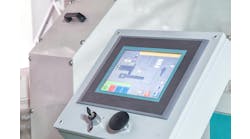Before we get started on the basics of hazardous-area human-machine interfaces (HMIs) and purging a control enclosure, if you haven't done it before, use great caution. An HMI is a possible ignition point when used in potentially explosive atmospheres, which is always bad—especially when an operator is often standing in front of the device. You must understand and confirm the area classification before even starting to specify protection methods and hardware.
If you are not fluent with installing control systems in an explosive environment, feel free to get training and certification. Training and certification is a good starting point.
The first step for HMI applications in explosive atmospheres is to understand the area classification. The manufacturing or processing facility is required by law to properly classify any area that may contain an explosive area. The HMI specified must clearly be marked with the certification for use in the area classification, for example, ATEX Zone 1 and NEC Class I, Zone 1, where ignitable concentrations of flammable gases, vapors or liquids normally exist or exist frequently.
The National Electric Code (NEC) and Atmosphères Explosibles (ATEX) directive provide requirements for worker safety and equipment when working or installed in an explosive atmosphere. These two documents are starting to merge for Class I areas. The NEC has replaced Division 1 and 2 classifications with the ATEX Zone 0, 1 and 2 classifications. NEC (Class I/Division) is now NEC (Class I/Zone).
NEC Article 505 notes that division-classified products may be installed in zone-classified locations, but the opposite is not true. Zone-classified products require specific protection techniques, such as use of an intrinsically safe, flameproof or purged method when applied. Division 1 classification doesn't require these methods if the device is certified for use in the area. This example should make clear the need for several qualified personnel to be involved when classifying, engineering, specifying, defining wiring methods, installing or inspecting equipment in hazardous areas or locations.
With the area classification clearly defined, consider locating an HMI outside the hazardous area or in a less-hazardous area. Some of the best ways to design a control system for use in an explosively classified area is to not go there. Place as much control hardware outside the area and use a long Ethernet cable to get as far away from things that may go boom as possible. The alternative is to carefully follow requirements for the safety and health of workers who may need to work in these environments. The equipment used, as well as the protective methods, should also be carefully followed.
There are many options for HMIs, but these options greatly depend on the HMI certification for use in a hazardous area. Obviously, the more explosive the area, the more difficult the installation.
In Class I, Zone 2, areas (formerly Class I, Div. 2), where ignitable concentrations of flammable gases, vapors or liquids are not likely to exist or rarely occur, an off-the-shelf solution may exist. If properly mounted in an enclosure door, the external face of the HMI is certified for use in the area, if labeled by the manufacturer.
However in Class I, Zone 0 and 1 areas, there are fewer options. Typically an HMI would require an explosion-proof enclosure, intrinsic safety methods or installation in a purged enclosure. To start, I wouldn't mount an HMI inside an explosion-proof enclosure, but it would be an impressive viewing window.
Using intrinsic safety with an HMI, PC or monitor is not a likely solution either. This technique works well for devices that operate on low-level currents and voltages, such as sensors and solenoids with a small current draw and proper coil enclosures. However, HMIs, PCs and monitors draw too much current to be energy-limited by intrinsically safe barriers.
Purging or enclosure pressurization is likely the best option for HMIs in Class I, Zone 1, areas. A viable solution is to place the entire HMI inside a properly purged enclosure per NFPA 496: Standard for Purged and Pressurized Enclosures for Electrical Equipment. An ATEX-certified system is required for European applications. The type of purge system depends on the area classification.
With the HMI in a purged enclosure with a suitable viewing window, push buttons could be used to control the HMI. A couple pairs of buttons to navigate, increment, decrement and enter values works well, but the HMI and controller would need to be programmed to allow screen control and changing variables using these buttons.
Another option, with the HMI in a purged enclosure, is to use an intrinsically safe keyboard and mouse or an intrinsically safe touchscreen overlay. There are many devices and options. Whichever method is selected, all devices must be certified for use and application in the classified explosive area.






